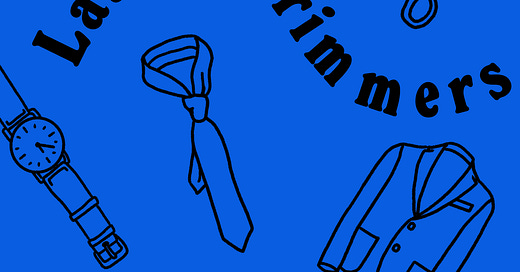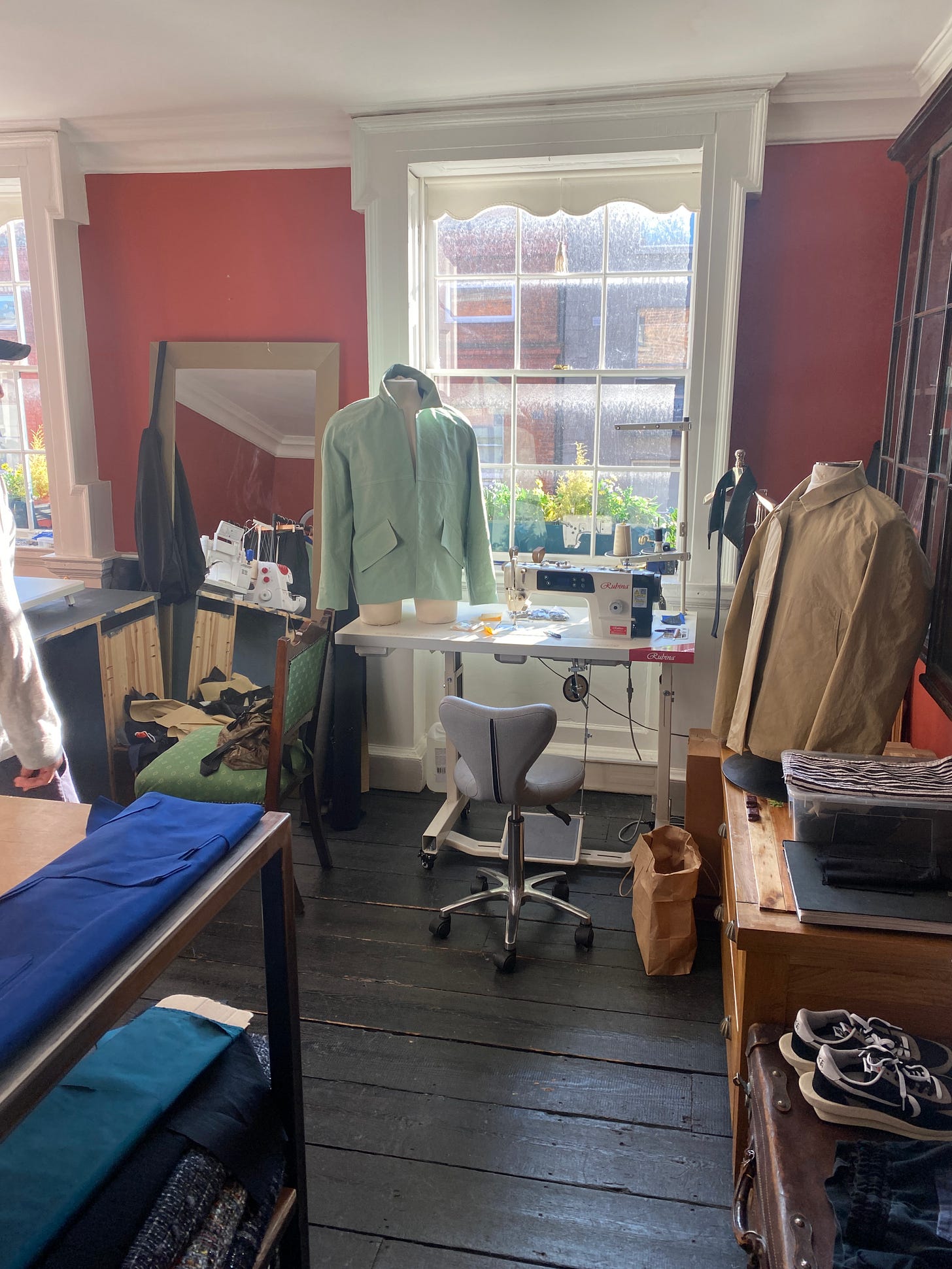Parliament Street is Dublin’s very first shopping thoroughfare. Lying within the cobblestones, stands Reads, the oldest shop in the city. The Read family opened their doors in the early 1700s as a Cutlers, where the shiniest knives, forks and Swords were hand-crafted.
Elizabeth Read, heiress to the family empire gave birth to a boy called Arthur Guinness, who’s turned out to do a thing or two in his time. This building was the home of the Reads for decades, where the Guinness family frequented on a regular basis.
People have been buying, selling and haggling goods here for nearly 300 years. Wandering through the city where slice shops and kebab houses are aplenty, a piece of mercantile magic lies innocuously among us.
Similar to the merchant tradition created by the Read family in the 1700s, today Lauris Brimmers is crafting his own piece of barbering and sartorial sorcery in the same building. Lauris’ barber shop sits on the ground floor which you enter via the original Crane Lane entrance. Atop the newly restored (award winning) staircase lies his studio for his bespoke namesake label.
Myself and Lauris met on Crane Lane and sat ourselves down in his plush barbering chairs. For Care Label #3 we discussed Latvia, dead-stock french fabrics and the extortionate price of the humble button-hole machine.
Care Label: Okay Lauris, so where are you from?
Lauris: Latvia.
Care Label: When did you come to Ireland?
Lauris: 2004. I dropped out of college in Latvia. I was meant to do fashion design, but I didn't get in. Instead, I did interior design. Then I switched to textile design and I lost interest. That’s when I came here.
Care Label: Riga’s, architecture is quite well known, the Art Nouveau style. Did growing up in Riga with this famous style of architecture spark an interest in design?
Lauris: Oh, yeah. It is beautiful. Yeah maybe it did. I always wanted to do architecture. I used to draw a lot when I was a kid. My mother was sort of an artist, she was good painter. But she never became an artist.
Care Label: And was there a particular moment that you were like, ‘Oh, yes, making clothes’?
Lauris: I think it's maybe gradual, I tried to kind to think to myself ‘why fashion’. I used to wear these boots, woman's boots. They were my sister's combat boots. But I was like ‘fuck it, I like them haha’. I was very young. It was in secondary school and people said;
PEOPLE : ‘They're woman’s boots!’
Young Lauris : ‘So what’.
Lauris: So I guess it was more about being different at that age you know? Because everyone all looked the same and everyone is in the same stuff. So maybe that's why I became interested in it.
Care Label: Yeah myself and Jamie Mann (Abode) spoke on this paradox of wanting to stand out but fit in at the same time, it’s strange.
Lauris: Even wearing clothes as a kid, at that time I mostly listened to metal music. Bands like Metallica and grungy music in the 90s. My Grandmother would say;
Lauris’ Grandmother: ‘What are you wearing, what the hell, put some normal clothes on!’
Young Lauris: ‘no’.
Lauris: So maybe that's it. A rejection of sorts, I don’t know.
Care Label: And as you said design came first with your interest in drawing and architecture. But how did this design manifest itself into making clothes? Why clothes and not something else?
Lauris: Well, I remember when I was doing college in Latvia, you were put in straightaway on the machine. I thought, ‘No, that's not what I want’. I didn't want to be put on the machine. I thought designing was when you got to draw everything from scratch.
Care Label: So you thought you started at a point that was incorrect?
Lauris: Yeah, I just thought i’d be drawing and that’s it. Then I came to Ireland and decided to go to college (Grafton Academy). When you're in college, you start making it. And now I love that. I actually changed. I prefer doing that more than actually drawing.
Care Label: Okay interesting, so the cutting and the making became more interesting?
Lauris: Yeah it's probably to do with cutting hair as well. It’s hands on with something you are making. When you draw, you don't know how it's going to look, but when cutting hair you go every step closer, closer, and you start seeing the result. But when you draw, it never looks the same anyway when you make it in person.
Care Label: It’s tactile and it’s there in front of you,
Lauris: Yeah and I don't actually do that anymore. I don’t draw, or sketch. I don't even have mood-boards, I just make. I make one jacket and from that I start creating other pieces.
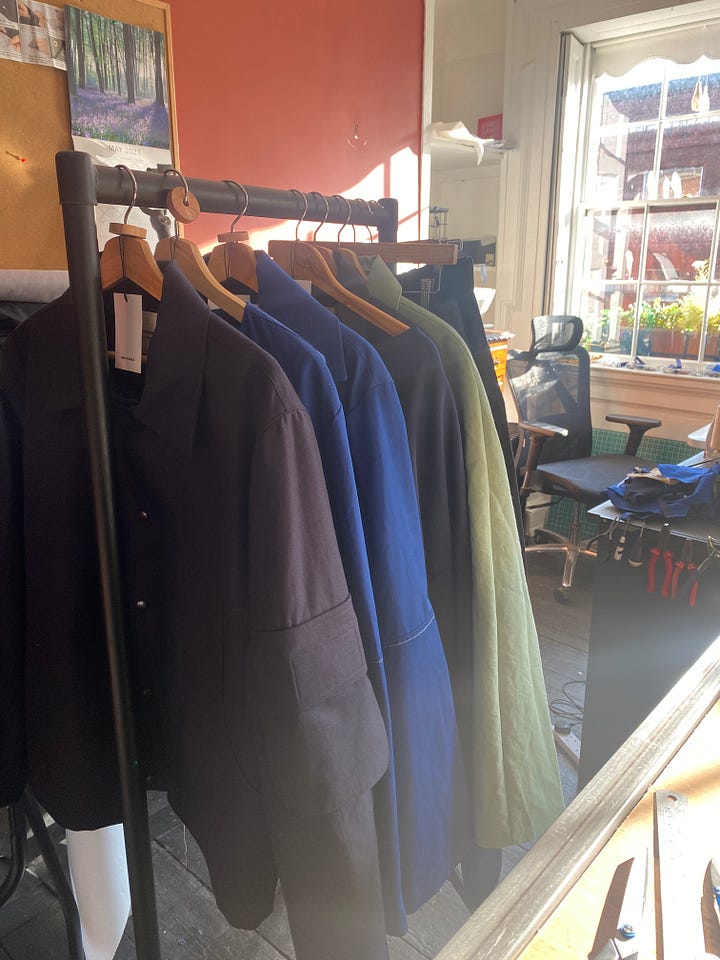
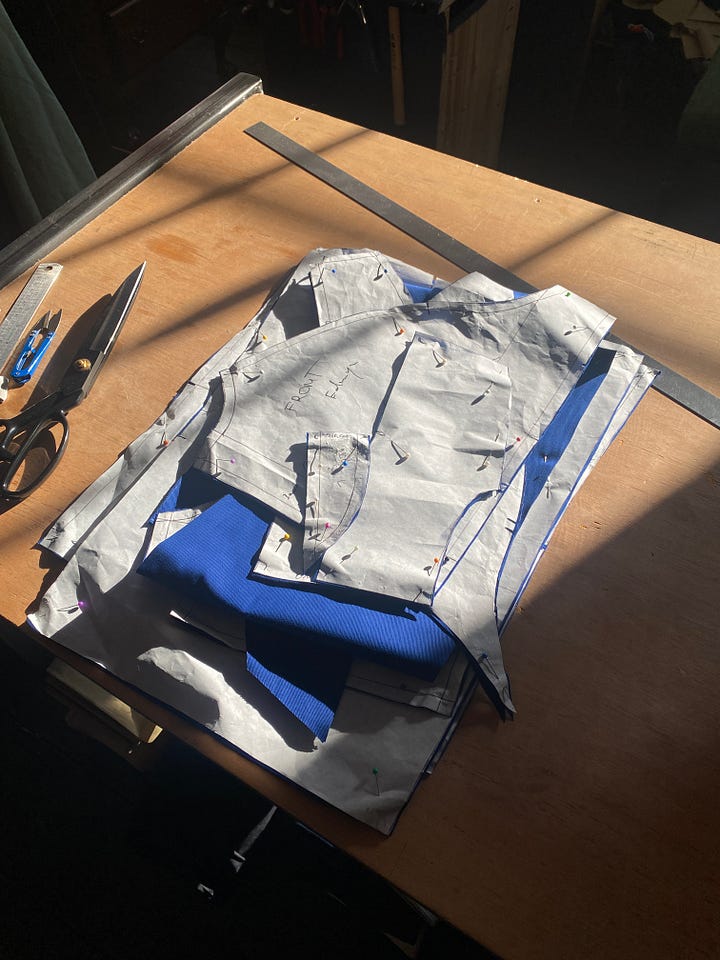
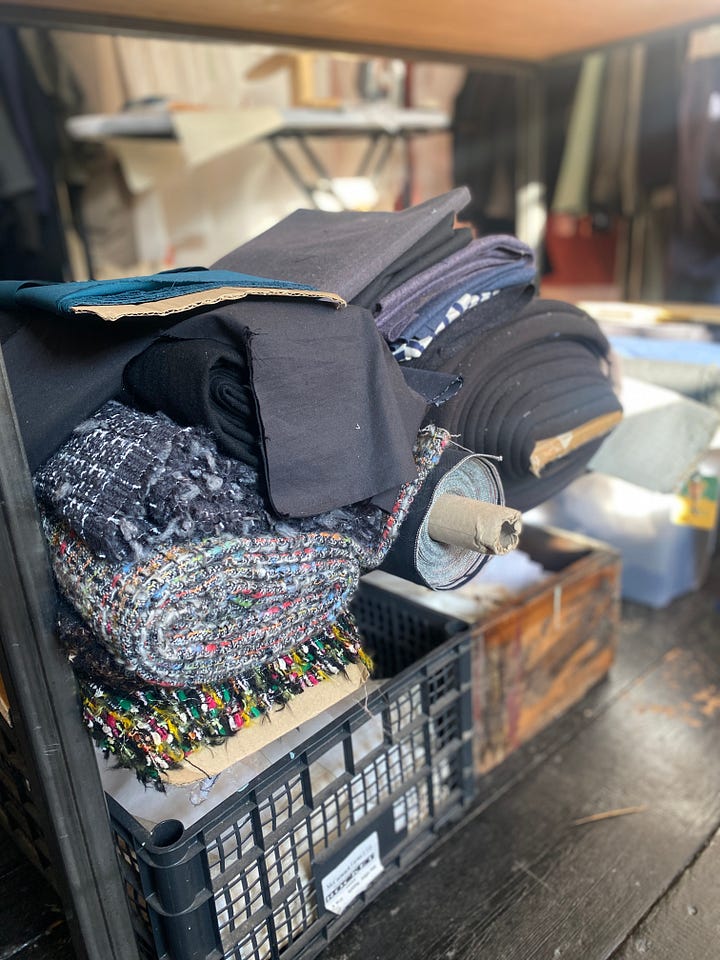
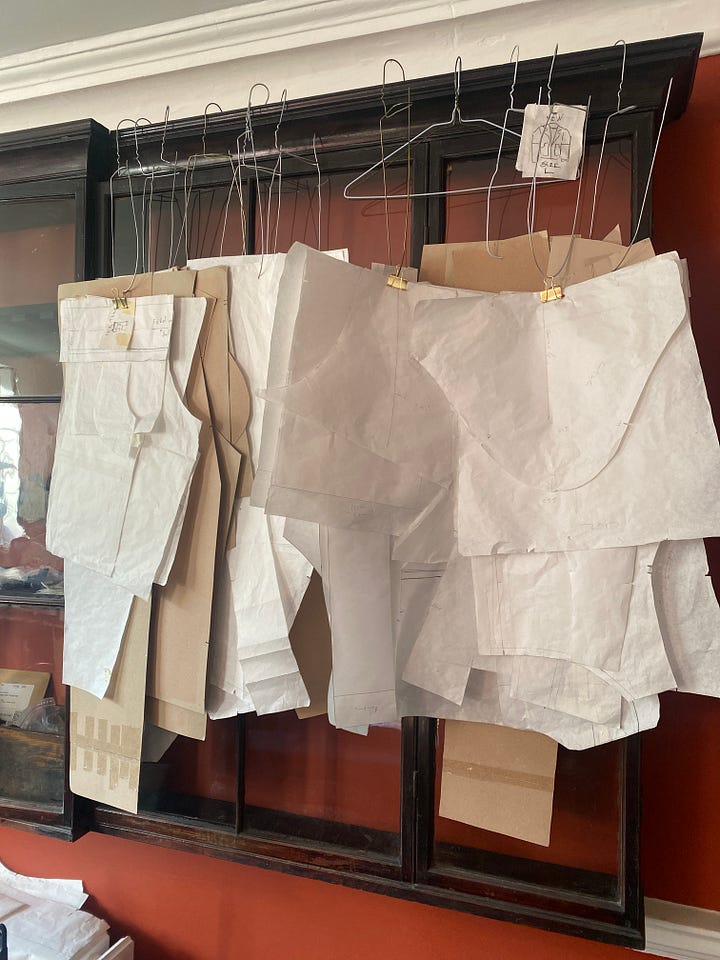
Care Label: Most of the stuff you make is quite hard wearing, workwear, utilitarian. So why are you drawn to this type of clothing?
Lauris: It's functional, it's simple. There’s something easy about these clothes. Well, not that it's easy, it’s definitely not easy! But it’s the most simple garment (jacket), but you can make it in an interesting fabric or construction.
Care Label: Yeah because I think what we wear reflects our lifestyle. Being a barber, you probably need a functional wardrobe. Scissors in one pocket, comb in another and cigarettes in another?
Lauris: Haha exactly yeah, it's functional. It's easy to wear.
Care Label: And over the years, between collecting stuff and making things what piece could you never part with?
Lauris: See, I don't get attached to those pieces. I do like them all. I don't think I've a favourite one. I think it's better not to get attached to them because it's harder to make a new piece.
Care Label: So you can disconnect from the designs?
Lauris: Yeah, I'm disconnected. I think it gives me more freedom. I don’t want to get tied to one thing. Because then if that happens, then you're always going to be sort of working around something that you’ve done before. I think it becomes harder to make new stuff.
Care Label: That’s interesting and means you’re always thinking of new ways of making. And do you buy pieces from other brands?
Lauris: I do, but I haven't bought clothing for maybe three years.
Care Label: Wow, so everything that you wear you make?
Lauris: Yes everything except, hats, shoes, socks and jocks. But yes, I've wanted to make just one look, sort of like a uniform. So you have one look for work, and then one look for your day-to-day.
Care Label: Yes, the pieces that you make you can wear in work or more leisurely. They have a wearability about them as well as being something ornamental.
Lauris: Yeah, well actually I'm doing a uniform for myself for the barbershop. It’s just going to be a jacket with a dark colour. It will probably be Navy.
Care Label: Navy looks great. Such an underrated colour. I’ve only been buying navy for the last while. A full navy fit? Now we’re talkin!
Lauris: Yeah it looks great. Black and navy together is probably one of my favourites. I’m slightly colourblind as well. I like the idea of a uniform. So that's why I try to keep it simple.
Care Label: I remember we spoke about Yohji Yamamoto before that you really like his work. So is there no brands that you look to?
Lauris: Yes I do like him. You wouldn't see many people wearing this stuff and maybe that's why I like it because you don't really see that, especially in Ireland. It's kind of tailored, it's clean, it’s structured. Even if it is draped, it still has a shape to it. It's not out of proportion. That’s important to find the balance between shape and fit. Something can look oversized, but it needs to fit well too.
*Burberry Plaid and Chanel Tweed*
Care Label: And when someone comes to you with a piece that they want to have made, where do you start? What's the process?
Lauris: No one comes with something very specific. I’ll show them what I have made in the past and go from there. If I don’t have the fabric they are looking for, we can try find a similar one. I don't have endless amounts of fabric because I buy dead-stock.
Care Label: Interesting, where does the fabric come from?
Lauris: It's all from France.
Care Label: And it’s all dead-stock?
Lauris: Yeah. It’s like the last ends of the roll. I’ve gotten dead-stock fabrics from big brands before and they’re beautiful. I’ve used Chanel Tweed before as well as Burberry fabric. It would all go to waste, but I can get it.
*One Mistake = New jacket for Lauris*
Care Label: Must be interesting to design that way because you only have a limited amount. You have to get it right,
Lauris: Yeah you have to get the first one right as that is the blueprint for the rest of them. Once I get the first one right, it’s more simple. But if I get it wrong, I won’t sell that piece. So that jacket becomes mine!
Care Label: And you've mentioned that you don't look at other designs at all?
Lauris: No, well I obviously see them and they stay in my head. I’m not reinventing the jacket, it's already there. The shapes I like are jackets or Kimono’s, things like that. So I've seen somewhere that I like these shapes. But I don’t look at anything to reference.
Care Label Reflection : If you read Care Label #2 with Aisling Farinella, she references how important it is to understand the creative process in order to appreciate the finished product. Lauris elaborates on this process below. When speaking to him and spending time in his studio, one begins to understand how important this is.
Care Label: With your skills you could work anywhere as a designer. But what drives you to do it all bespoke, all by hand?
Lauris: Maybe stubbornness haha. I just couldn't ask someone to make it for me, because I can do it myself. It probably comes from learning it as well, I enjoy the learning process of doing the design. It’s cool to learn the process. The understanding of doing those patterns even when they’re not right and trying to get it right the next time? I enjoy that.
Care Label: So you like the challenge of making it yourself?
Lauris: Yeah and then seeing it on somebody. Saying to yourself, ‘shit yeah I made that’. Every new piece that I make I can’t wait to see. It’s exciting. It's like I’m a kid! So when you start with a new design, you can’t wait to see how it's going to look.
*Done in Dublin all by hand*
Care Label: Yeah. And you have a ‘Done in Dublin’ Tag on all your pieces. Not many people can say that,
Lauris: Yeah, it’s all upstairs in my studio. All by hand!
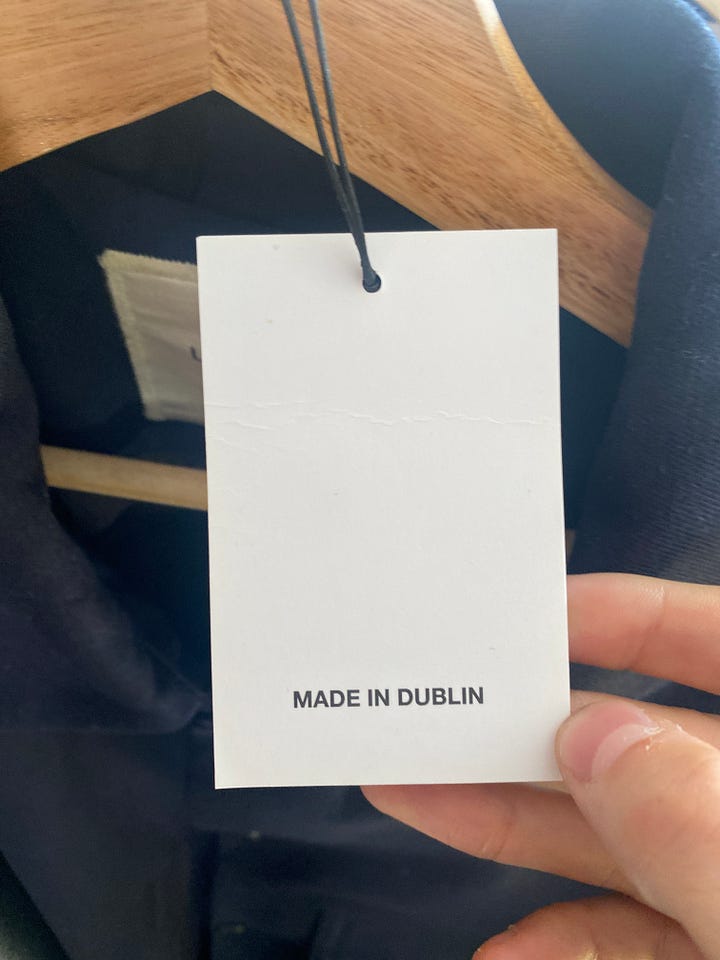
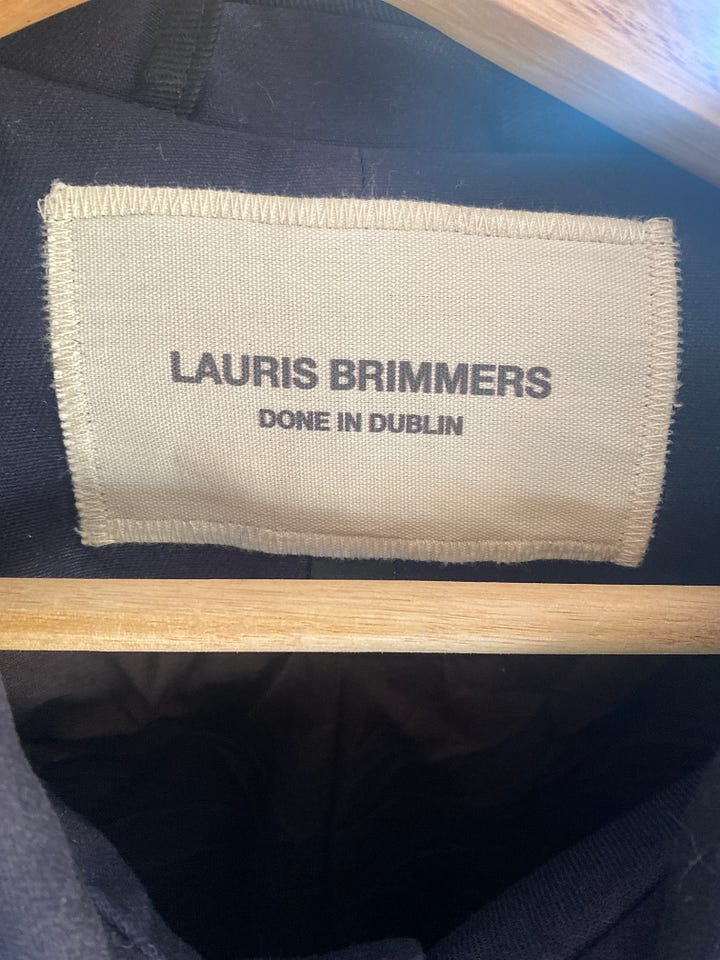
Care Label: For someone who works as an independent maker, you work upstairs and you do it all yourself. Describe the life or the reality of that type of work. It's much easier to go and be a designer for a brand but as you said, doing it all yourself is a challenge.
Lauris: In Ireland, there was never really the opportunity to go anywhere to work as a designer. Even if there was, I didn't want to sit at a computer and copy and paste. I want to make stuff.
Care Label: Making Stuff is the most important for you.
Lauris: MOST important. But it’s quite difficult to get into the constructing side of things here. That’s what I love.
*Labour of Love*
Care Label: When you want to make a new piece or a new collection. How long does it take? What's the process?
Lauris: Well, it depends on the piece. So you make the pattern. That takes quite a lot of time. But It depends on the piece as well. It depends on the quality and weight of the fabric too. Once you have made one piece, then you know how it’s gonna come together.
Care Label: Yeah, it's hard because the customer in Ireland is relatively limited. Sometimes you think, do people appreciate this process? I love it and so do others. But you get stuck in a bubble thinking why doesn’t everyone want this type of thing?
Lauris: Yeah and I’ll likely never make money with this. Doing that way (bespoke) it is so difficult. The prices would need to triple to make it worth it. But I'm still ‘Made in Ireland’. So that's kind of the plan, to keep it all made here. On this scale, it’s trying to figure out how to make that work.
Care Label: I love that. Getting something made by someone you know, all by hand is great.
Lauris: Yeah it really is. The people who see the pieces, love them. And I’ll sell pieces to those people. But it's a huge undertaking. If I make 5 jackets, a lot of time, money, everything goes into making those five jackets. Then I need to create an online platform to sell the pieces. Then I need another 5 jackets in a different cut, in a different colour! So it's endless. But at the same time, I love that.
Care Label: And what advice would you give to someone who wants to start off doing this type of work? Where would you start?
Lauris: Just go do it I suppose. You know, if you want to do it just go for it. It's not gonna be easy! I'm lucky where I am with the building. The space you have and having that space to work is so important. Without that it's like doing it on your kitchen table. If I was making them at home, you wouldn't even feel like ‘oh, I could sell these pieces’. You have to be inspired. The space is crucial.
Care Label: And, what's the easiest way to make a start if you wanted to start sourcing fabric or even getting the right equipment?
Lauris: I’m still buying equipment myself. Because first of all, it's so expensive. One machine could cost 2K+.
Care Label: That’s pricey indeed,
Lauris: Even a button hole machine, that is super pricey. Something so simple as button holes. I don’t have one so when I do it, I do it by hand. That is one of the most expensive machines.
Care Label: A button hole machine? You wouldn't think it's expensive at all?!
Lauris: Yeah, it' probably starts from €2000.
Care Label: And then lastly, what are you working on at the moment?
Lauris: I’m working on some lighter pieces for the summer. Like this one here.
Care Label: Is it water resistant?
Lauris: Yeah, it’s cotton and silk.
Care Label: Oh, wow. That's nice.
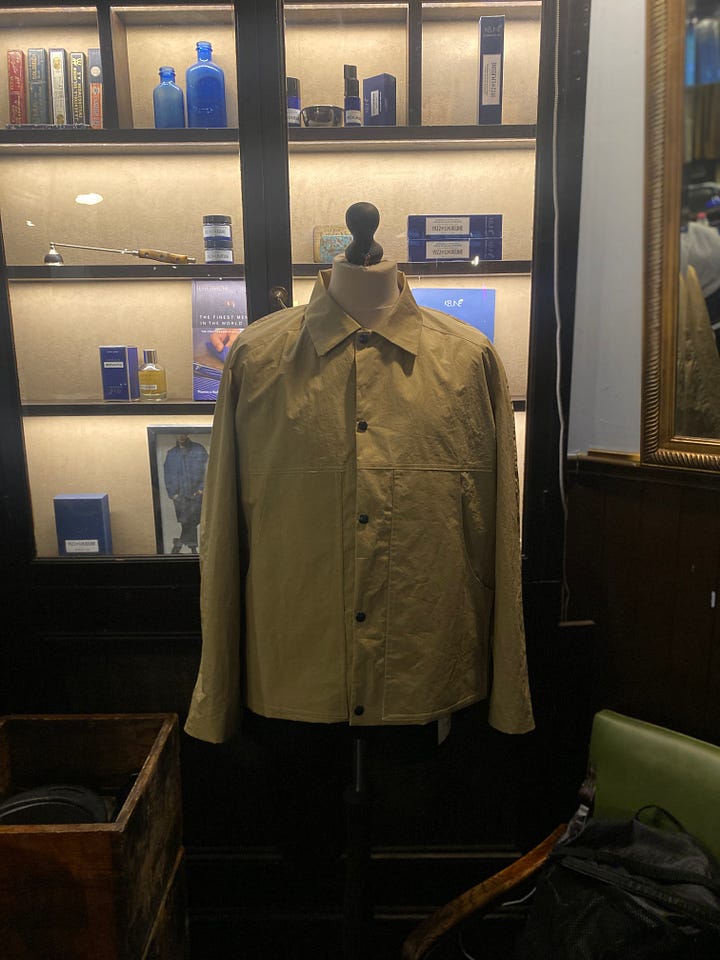
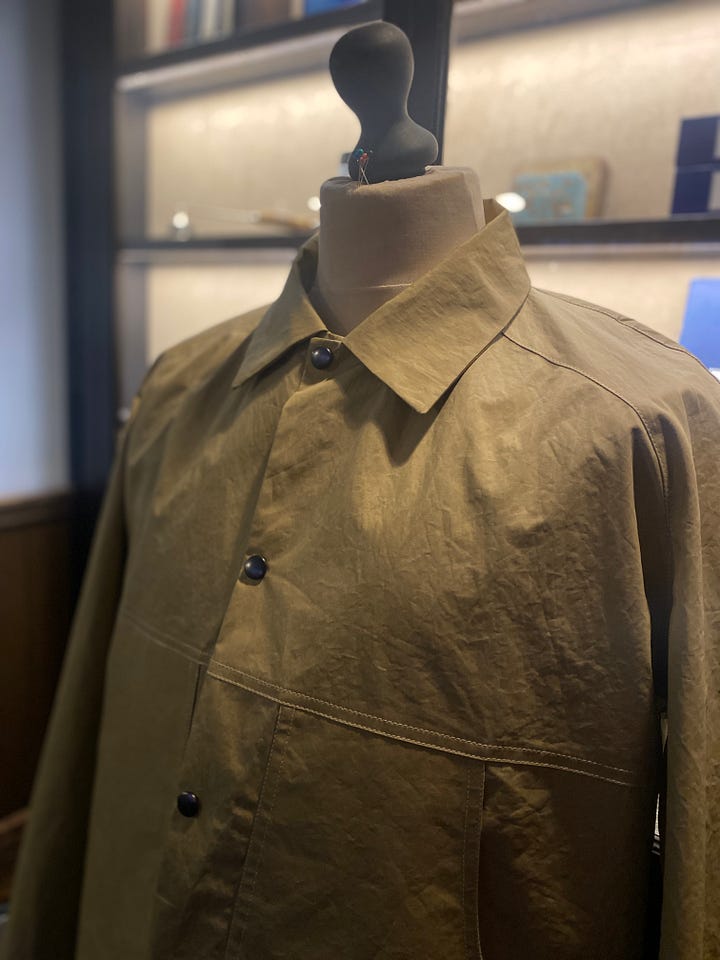
Lauris: I'm going to do new winter stuff soon. It's just depends when you get the fabric. That’s when you kind of say ‘Oh I can make from this’. But I’m probably not going to make any new shapes. I might alter the colour, take off a pocket, things like that. And because everything is dead-stock, I can get some interesting fabrics in cool colours or textures.
Care Label: That type of stuff just works doesn’t it? You have it for years. You can dress it up, you can dress it down. Or even with a tie! A workwear jacket with a shirt and tie? Now that’s a look!
Lauris: Yeah exactly. Another nice thing is that because of the fabric choice and that it’s limited, it makes you keep going so you don't get bored. When the next roll comes in, you can make it longer, shorter, but in a totally different fabric.
Care Label: Amazing, thanks Lauris.
Hope you enjoyed my chat with Lauris.
Stay tuned for more!
IG @laurisbrimmers for hair and private appointments for new workwear.

